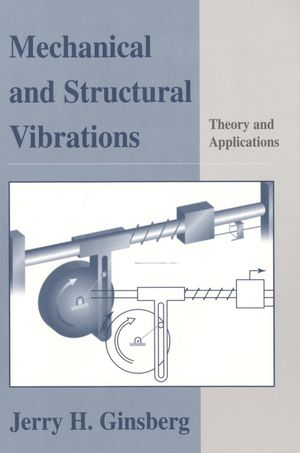|
Textbook
Mechanical and Structural Vibrations: Theory and ApplicationsISBN: 978-0-471-37084-0
Paperback
712 pages
January 2001, ©2001
 This is a Print-on-Demand title. It will be printed specifically to fill your order. Please allow an additional 10-15 days delivery time. The book is not returnable.
|
||||||
- New formulation based on the principle of power balance as the basic method for deriving equations of motion for one- and multi-degree-of-freedom models. This approach allows for direct application of Lagrange's equations as an alternative.
- Equal emphasis on Matlab and Mathcad, including identification of errors commonly made by students when each program is used for vibration analysis.
- Thorough treatment of FFT technology, and its application to vibrations.
- Analysis of transient response using frequency domain convolution, including avoidance of aliasing, wraparound, and leakage errors.
- Experimental identification of system parameters for one-degree-of-freedom systems.
- Experimental model analysis for multi-degree-of-freedom systems.
- Extensive discussions of physical significance of results.
- Uses recent research in many examples, such as mode localization in bladed disks and beams, and dynamic stability of pipes.
- Study of continuum vibrations does not require knowledge of partial differential equations.
- The primary tool for continuum vibrations is Ritz series expansions, which is applied to axial, torsional, and flexural vibration of bars having masses, springs, and dashpots at arbitrary locations.
- New formulation of modal analysis for arbitrarily damped, but non-gyroscopic, systems leads to symmetric state-space eigenvalue problem.
- The approach builds on familiarity with undamped modal analysis, and is highly accessible.
- Underdamped and overdamped modes are explained relative to analogous behavior of one-degree-of-freedom systems.



